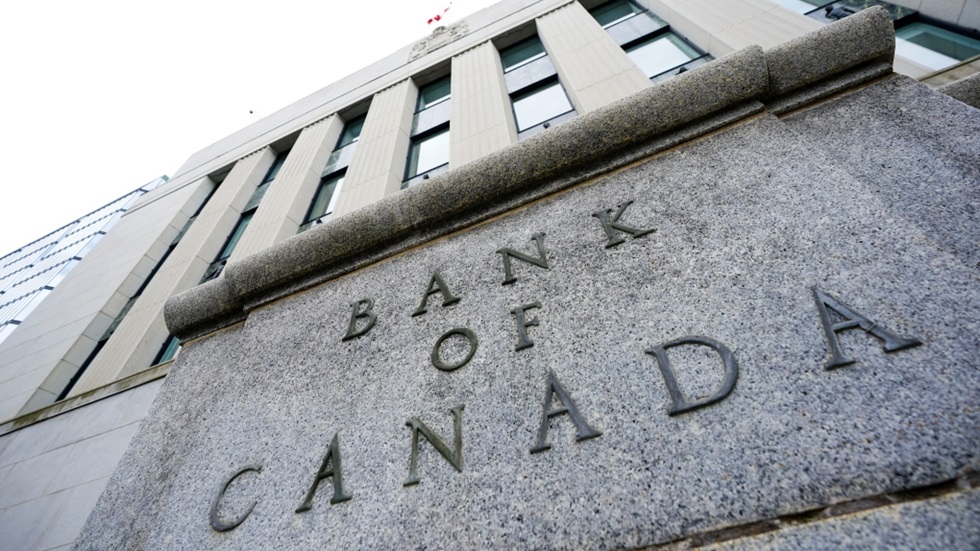
TORONTO—Statistics Canada’s May 10 release of the Labour Force Survey’s Jobs Report broke hearts across Bay Street and at the Bank of Canada’s (BoC) main office in Ottawa. The bad news? Canada’s economy had added 90,000 new jobs in April, blowing away even the most fantastical projections on economic performance.
But why the long faces? With Canada’s GDP slowing to a crawl, unemployment surging across the country, and labor productivity hitting all-time lows (something the BoC’s Deputy Governor called a “national emergency”) surely getting people working could be nothing but a good thing—especially after years of hankering about how labor force participation was too low (“No one wants to work anymore!”).
The sighs of disappointment rang out because for the past two years, the BoC has been trying desperately to drive up unemployment in the country, arguing that this will soothe demand and cool inflation. This approach rests on the widely debunked theory that the inflationary crisis gripping working people in Canada at the grocery store, the gas pump, and through their housing costs has been driven by too much buying power in the hands of the working class.
In reality, however, the inflationary pressures of the last two years are not demand-driven but rather supply-driven, which means that pressuring demand through interest rate rises will not drive down inflation, particularly in the short term. Predictably, after nearly two years, the BoC is losing the battle on inflation, and is still not at its target rate of 2%. In fact, with ongoing fluctuations in oil prices driven by Israel’s genocide in Palestine, inflation will likely remain “sticky,” if not increase soon, as is happening in the U.S., which is seeing a jump in inflation to 4% over a three-month rolling average.
Indeed, the BoC and chief economists from Canada’s big banks mournfully reported that the Jobs Report indicated “that the economy is clearly not rolling over,” which would give pause to the BoC on potentially lowering interest rates in June.
While top economists may complain about an economy that just won’t die, the reality is that economic indicators show an economy in Canada that is bad and getting worse, especially for working people. While rate hikes may not be driving down inflation, they are nonetheless producing widespread immiseration.
The Canadian economy is taking a bruising as interest rate hikes ripple through the market. GDP growth has slowed to a crawl, with three years of decline bringing the growth rate to the lowest since 2016 (excluding 2020). In addition to the slowdown of the GDP rate, Canadian industries’ capacity utilization—a measure of the actual output of Canadian labor/industry against its potential output—dropped below 80% in Q4 2023, the fourth time this century alongside the economic crises in 2020, 2016, and 2008-09.
Since Q1 2022, corporate bankruptcies have increased by over 300%, with over 600 companies filing for bankruptcy in January 2024 alone. This is double the Canadian average of 344 bankruptcies per month since 2000. Business closures are having their intended effect, too: While the economy may be adding some jobs, unemployment is still ticking up, reaching 6.1% across the country. The rate is with even higher in some major urban centers like Toronto, where it sits at 7.7%. Over the last 12 months, the number of regular employment insurance beneficiaries has increased by 20%, a jump of almost 100,000 recipients across the country.
While 6.1% unemployment may not seem completely out of step with the norm in Canada since the 1990s, it’s not just the rate but the rate of increase that matters.
According to the “Sahm Rule,” named after economist Claudia Sahm and an indicator of recession widely relied on by economists, a country has entered a major recession if the rate of unemployment is 0.6% higher than the lowest recorded level from the last 12 months. The unemployment rate in Canada is a full percentage point above its 12-month low. While traditional measures of recession typically have a delay of two to three years, the Sahm Rule does not. Canada is in the grips of a major recession right now.
All the while, Canadian corporate profits have maintained staggering highs. According to economist Jim Stamford:
“After-tax corporate profits across the financial and non-financial sectors of the economy totaled $577 billion [in 2023]. That was down just 3% from all-time record profits booked by corporate Canada in 2022—the same year inflation peaked at over 8%. The moderation in profits (both in absolute dollars and as a share of GDP) last year contributed to the rapid easing of inflationary pressures. But profits remain unusually high compared to pre-pandemic years—in absolute dollars, as a share of total business revenue, and relative to GDP.”
The reality is that corporate profits have long been shown to have been the driving factor in growing inflation in Canada, and if the BoC and Parliament were serious about winning the war on inflation, that is what they would be targeting.
But the real war in Canada is not an inflationary war—it’s a class war. So, protecting profits will always be the main priority for Canada’s ruling class, no matter the cost (so long as it’s working people who bear it, of course.)
The question before us now is: What are working people going to do about it? The 37-year high strike activity in 2023 gives us hints about the answer.
People’s Voice
We hope you appreciated this article. At People’s World, we believe news and information should be free and accessible to all, but we need your help. Our journalism is free of corporate influence and paywalls because we are totally reader-supported. Only you, our readers and supporters, make this possible. If you enjoy reading People’s World and the stories we bring you, please support our work by donating or becoming a monthly sustainer today. Thank you!










